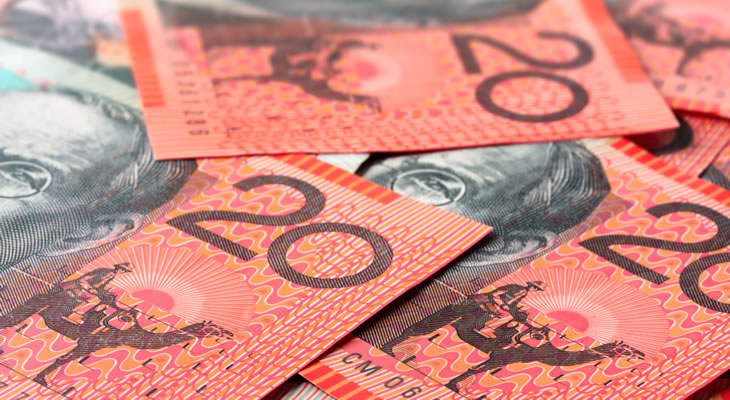- GBP/USD Returns to 2015 Levels – 2016 losses largely erased
- Eurozone GDP Boosts Euro – Shared currency up against many rivals
- RBA Cuts Rates – Australian interest rates now at record low 1.75%
- Forecast: New Zealand Data – Anticipated dairy auction results, unemployment prints ahead
Pound Sterling (GBP) Holds Firm, ‘Brexit’ Bets Dwindle Further
The Pound held steadfast as British markets opened for the week, following light trade on Monday as the UK observed its May bank holiday.
While it trailed a little lower against the continuously strong Euro, Sterling was able to make a sharp 90-pip gain on Tuesday morning against the US Dollar, meaning GBP/USD has now erased its 2016 losses.
This strength comes despite a considerable lack of data for the Pound, with continually decreasing ‘Brexit’ bets keeping it appealing and encouraging consolidative trading from investors.
US Dollar (USD) Continues to Weaken on Lowered Fed Rate Hike Bets
The GBP/USD exchange rate continued its bullish recovery into the new week, where it managed to hit its highest point since the very beginning of the year. According to Bloomberg, the ‘Cable’ recovery is thanks to falling chances of Britain leaving the EU, as well as continuously poor US data hurting the chances of an interest rate hike soon.
While Monday’s session was light on GBP trade due to the UK bank holiday, US data released on Monday was largely negative and hurt the ‘Greenback’ further. Manufacturing PMI printed as expected at 50.8, but ISM Manufacturing scored a low 50.8, well below forecasts that it would drop from 51.8 to 51.4.
A speech by San Francisco Federal Reserve President John Williams also dented USD when he suggested that drops in assets could be a systematic risk to the economy.
Euro (EUR) Bolstered by Encouraging GDP
An unexpectedly positive Eurozone Gross Domestic Product (GDP) report sent the Euro advancing against many of its rivals and caused the EUR/GBP advance at the end of last week’s session.
According to the report, the Eurozone grew by 0.6% in Q1, above the previous figure of 0.3% and above even optimistic forecasts of 0.4%. This score indicated that the Eurozone’s economy had returned to pre-recession levels and largely bolstered Euro sentiment after other recent global economic news, such as economic slowing in China, had worried investors.
The Euro may also have strengthened in response to comments from European Central Bank (ECB) President Mario Draghi, defending the bank’s stimulus methods from German critics.
Australian Dollar (AUD) Plummets as Rates Cut to Record-Low
The Reserve Bank of Australia (RBA) shocked investors on Tuesday when it announced that Australia’s key interest rate would be cut from 2.00% to a record-low 1.75%. The cited reasons for the cut included overvaluation of the Australian Dollar, a lower outlook for inflation and attempts to further reduce risks in Australia’s housing market.
Analysts and investors had previously expected that the RBA would merely hint at a rate cut in its May meeting, but the ‘Aussie’ plunged when the central bank went ahead and loosened policy. As a result, GBP/AUD hit its highest point since February.
New Zealand Dollar (NZD) Maintains Hawkish RBNZ Strength
The Pound struggled to maintain its levels against the strengthening New Zealand Dollar on Monday and Tuesday as investors set their sights on Tuesday’s dairy auction results and unemployment reports from New Zealand.
Increased activity from Chinese buyers has led analysts to hope that dairy prices could recover for the third consecutive session and further restore confidence. Unfortunately if dairy prices worsen again it will likely hurt the ‘Kiwi’, while unemployment is currently forecast to worsen from 5.3% to 5.5%.
Canadian Dollar (CAD) Up on Oil Price Boost, Investors Await GDP
The GBP/CAD pair gained gradually over Monday and Tuesday’s sessions as data last week showed Canadian GDP slowed as forecast during February. The monthly GDP of -0.1% marked the first decline of Canadian growth in 5 months, allowing the Pound to rise.
Fortunately the Canadian Manufacturing PMI released on Monday showed an increase from 51.5 to 52.2. Analysts also do not expect the Bank of Canada (BOC) to cut rates in response, and as a result ‘Loonie’ losses are unlikely to be bearish for a long period.


Comments are closed.